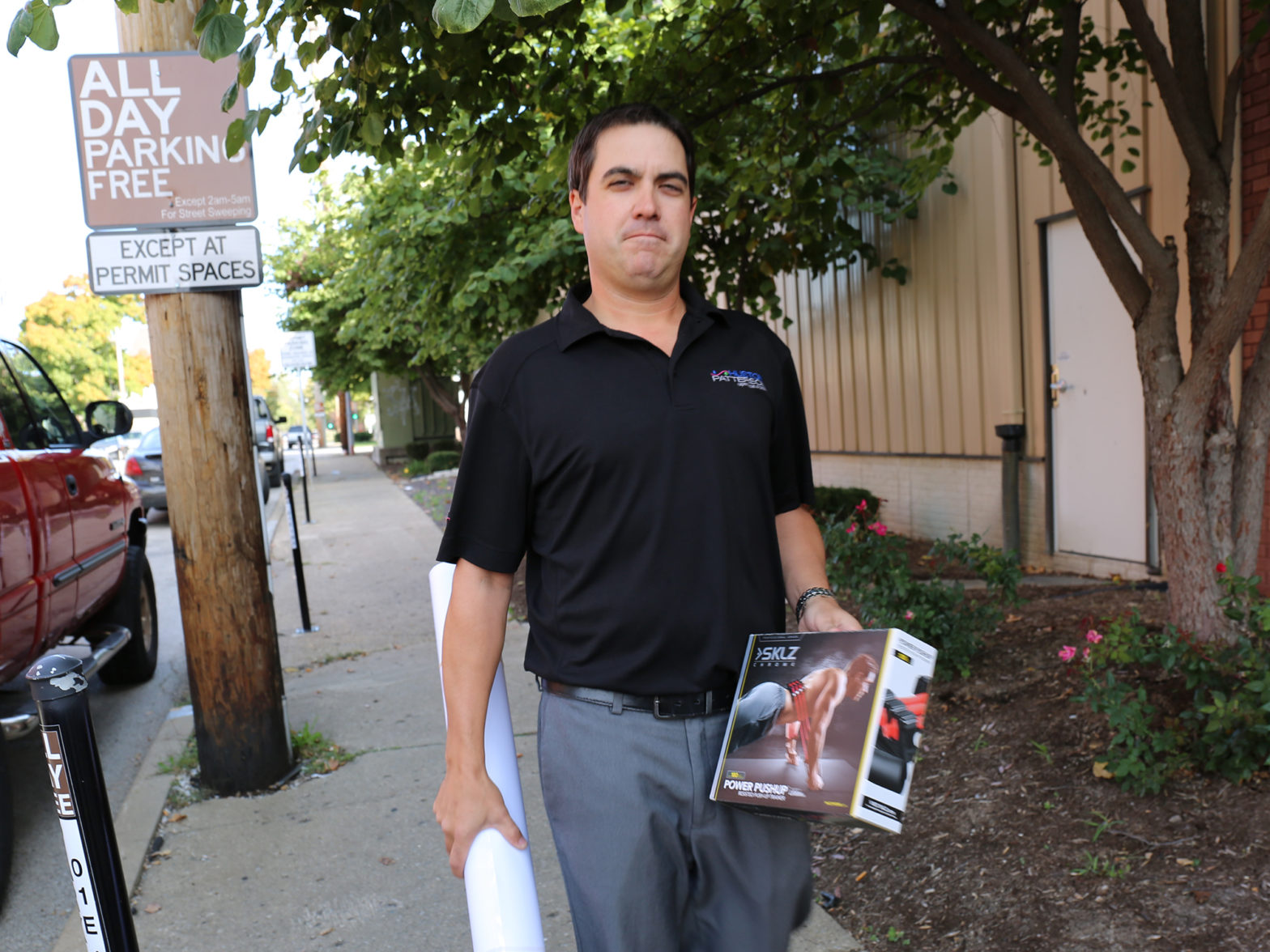I was introduced to the packaging industry at an early age and instantly fell in love with the possibilities. My grandparents’ neighbor was a pioneer of packaging who showed me the endless opportunities that packaging has to offer and pushed me to pursue a career in the field.
James “Jim” Goff was just one of the guys at my grandparents’ house in Portland, Michigan during parties or helping my grandfather troubleshoot woodworking projects. Both Jim and my grandfather were incredible wood craftsmen and made their families countless heirloom pieces that are still cherished today.
I was around 14 years old when I found out who Jim really was and what he did for a living. Jim was retired by then and living a happy life with his wife Genevieve in the small quiet town where he had spent his entire life.
The first time I visited his house, he showed me a room filled with all sorts of packages. There were bottles, boxes, cans, bags, and everything else you can think of, lining the shelves and walls. He explained to me the importance of packaging and the role it plays in our everyday lives. He challenged me to think of something that didn’t come in a package. I remember laughing and saying, “Watermelon!! It doesn’t come in a package Jim!” He chuckled, “Errrr wrong, try again. Watermelons get delivered to the store on a truck, in a big bin, which is on a wooden pallet. That’s 3 packages!” He went on to explain that they obviously don’t grow in a package, but a watermelon is put in many forms of packaging before we buy it from the grocery store. I came up with a few more attempts to name unpackaged products that he immediately shot down.
Jim taught me that literally everything comes in a package and that everyone selling a product needs to package it in some way. Jim told me that packaging will always be needed, and it will never go away. “You will always be able to find a job”, he said. “The industry is recession proof and so valuable to the world that it will always be around.” From that day forward, I was intrigued by packaging and what it does for us in our day to day lives.
I believe 2020 was a year that proved Jim to be exactly correct. During the global pandemic, we have seen packaging demands climb to all-time highs. Unfortunately, we have a supply problem right now, but despite that, more packages were needed this year than ever before. Jim had all of these “samples” in his house and so much knowledge about the subject because he was a founding father of Packaging Education.
While he was a graduate student at Michigan State University (MSU) in the early 1950’s, Jim became the first Professor of the newly formed packaging program within the Department of Forest Products. By 1957, he was able to convince MSU to create a School of Packaging, the first university level Packaging Education and Research program of its kind. I believe he told me that they graduated five students in the first class of 1961. 60 years ago!
Often, Jim and I would talk about packaging as a future career path for me. He would ask me where I wanted to go to college and what I wanted to be when I was older. I would tell him that I wanted to be a doctor, or a hockey player. He was always sharp, smart, and funny and he told me to forget those ideas and to go to his School of Packaging at Michigan State University, and that I wouldn’t regret it.
Well Jim, you were absolutely right, I don’t regret it! I graduated from MSU’s School of Packaging in 2003 with hundreds of fellow students. The building where our classes were held was built because of Jim’s tireless efforts of fundraising and planning with the university. Jim’s School of Packaging has been the model for other programs around the world and is the best program for Packaging Education today. His vision for this program has led to the graduation of well over 10,000 students. According to the university website, more than half of all packaging graduates employed in the United States come from Michigan State. Their collective contributions to the packaging industry are impossible to measure.
Jim was a true legend of packaging and he inspired me to follow in his footsteps. Counting the education I received in his program, I have now been in packaging for 22 years, over half of my life, and I can’t see myself ever doing anything else.
I was new to California and working as a bartender when I landed in the realm of corrugated boxes and printing thanks to a chance golf round. I was grouped together with Tom Roe, the former owner of Oklahoma City Box (now SupplyOne). After talking about packaging for 9 holes and learning that I graduated from MSU’s School of Packaging, Tom offered to help me find a job in the industry. He made some calls to his network around the country and set up an interview for me with Richard Schmidt, former owner of Golden Bear Packaging (now Kaweah Container). Richard gave me a chance and took me under his wing. The experience and knowledge that I received from Richard is immeasurable and I am truly grateful to have been able to work with and learn from him. I am also 100% sure that my degree from Jim’s School of Packaging at MSU is the reason why he took the chance on me.
“If you can’t hack it, pack it!” This was Jim’s funny line about students he would try to poach from the College of Engineering. I am forever grateful that I listened.
For more tips from me, Kyle Milley, and the Real People of HP, explore our additional blogs and videos, or contact us directly at Huston Patterson.

